The Royal Palace of the Kingdom of Cambodia |
|
| Built in 1866 by King Norodom the Royal palace is now home to His Majesty Preah Bat Samdech Preah Norodom Sihanouk, King of Cambodia, and Her Majesty Preach Reach Akka-Mohesey Norodom Monineath Sihanouk, the Queen of Cambodia. The Palace grounds are opened to the public except when the King is in residence. Within the palace compound are the coronation hall; the entrance, which houses an open-air theater for the Royal Dance Troupe, and a balcony for Royal appearances; an open-air pavilion often used for entertaining and viewing of the King's movies; and the King's private residence, which houses a collection of Cambodian artwork from artists around the world, and his office, where he actively pursues Royal duties. The architecturally incongruous Napoleon III pavilion shipped and reassembled in Cambodia was a gift of the French Empress Eugenie in the early 20th century. .Outside the southeast wall of the palace is the house of the white elephant traditionally used for special regal occasions including Royal births, deaths or weddings | |
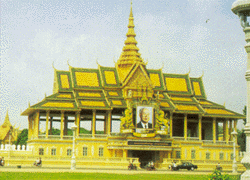 |
|
|
In front of Royal Palace |
|
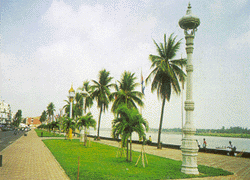 |
|
The Silver Pagoda |
|
| Located within the Royal Palace compound, the Silver Pagoda is so named because of its floor, which is made up of 5,000 silver tiles. On display inside are hundreds of Royal gifts received by the Royal family over the years. Among the treasures are a solid gold Buddha encrusted with, 9584 diamonds and weighing 90 kilos and a small 17th century emerald and baccarat crystal Buddha. The compound also houses Wat Phnom Mondap, containing Buddha's footprint. The walls surrounding the compound - the oldest part of the palace - are covered with frescos depicting episodes from the Khmer version of the Ramayana, the Reamker. |
Silver Pagoda |
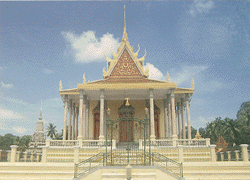 |
|
The National Museum |
|
| Located just north of the royal Palace, the Nationals Museum has recently been restored and represents the finest of Phnom Penh's architecture. On display inside are more than 5,000 works of art, ranging from the 7th to the 13th century. Treasures include sculptures, 19th century dance costumes, Royal barges and palanquins. Visitor can rest by the peaceful, palm-shaded central courtyard and lotus ponds and contemplate one of Asia's riches cultures. |
National Museum |
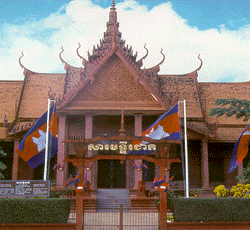 | |
The Independent Monument |
|
|
The monument was inaugurated in 1958 to celebrate the independence of Cambodia from foreign rule. It now also serves as a monument to Cambodia's war dead. Trespassing onto the monument in illegal. The best view if from across the street. |
|
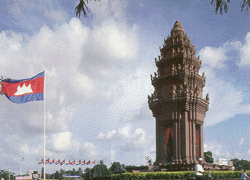 |
|
Choeung Ek Genocidal Center |
|
| The killing fields' of Choeung Ek is the site of the deaths of thousands of victims of the Khmer Rouge. It is now a group of mass graves and a memorial stupa. |
Choeung Ek |
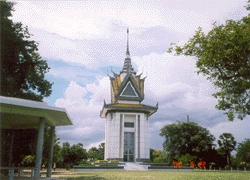 |
|
Toul Sleng Museum of Genocidal Crime |
|
| Prior to 1975 Toul Sleng was a high school but under the Khmer Rouge (KR) it was used as a torture facility. The building now serves as a museum and a memorial. Photos of some of the victims as well as paintings by a survivor hang on the walls. The complex has been preserved as the KR left it. |
Genocide Museum |
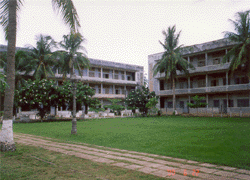 |
|
Wat Phnom |
|
| A small hill crowned by an active water marks the legendary founding place of Phnom Penh. The hill is the site of constant activity, with a steady stream of the faithful trekking to the top and a constellation of vendors, visitors and motor taxies at the bottom. Elephant ride is available. The current temple was last rebuilt in 1926 and received a facelift in 1998. Legend has it that after particularly heavy flood a wealthy woman named Daun Penh found. |
Wat Phnom |
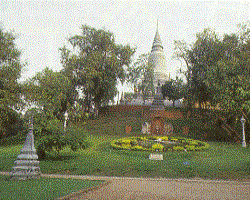 |
|